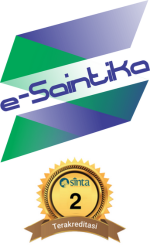The Influence of Zinc Supplementation on Improving Learning Concentration and Hemoglobin Levels in Anemic Adolescent Girls at Junior High School
Abstract
Mild to moderate anemia impairs cognitive performance and academic engagement among adolescent girls, yet school-based nutrition programs in Indonesia focus largely on iron and vitamin A. This study evaluated whether a focused 30-day regimen of 20 mg/day zinc could improve both hemoglobin concentration and attention, as measured by the Stroop Color–Word Test, in 30 junior high school girls with baseline hemoglobin < 12 g/dL. Following daily supplementation, mean hemoglobin rose from 10.6 ± 0.5 g/dL to 12.4 ± 0.4 g/dL (Δ = 1.8 g/dL, p < 0.001, Cohen’s d = 3.86), fully eliminating moderate anemia in this cohort. Stroop scores increased from 61.2 ± 5.3 to 75.8 ± 4.6 points (Δ = 14.6, p < 0.001, Cohen’s d = 2.88), with no students remaining in the lowest concentration category post-intervention. These parallel gains reflect zinc’s dual role in enhancing erythropoiesis improving cerebral oxygen delivery—and modulating neurotransmission via NMDA/GABA balance and BDNF upregulation. Effect sizes exceed those typically reported for iron-only or broader micronutrient interventions. Findings support integrating a one-month zinc supplement into Indonesian school-health protocols to rapidly correct anemia and bolster cognitive readiness for learning.
Keywords
References
Arikunto, S. (2019). Prosedur penelitian: Suatu pendekatan praktik (Revisi ed.). Rineka Cipta.
Astuti, D., Wulandari, T. A., & Pranoto, Y. (2021). Pengaruh suplementasi zinc terhadap kadar hemoglobin remaja putri. Jurnal Gizi dan Kesehatan, 13(1), 35–42.
Andayani, R., & Prameswari, H. (2019). Zinc sebagai mikronutrien penting dalam pencegahan anemia: Studi literatur. Jurnal Ilmu Kesehatan Masyarakat, 11(3), 213–220.
Black, M. M., Baqui, A. H., Zaman, K., El Arifeen, S., Black, R. E., & Maternal and Child Nutrition Study Group. (2019). Zinc supplementation and child development: A review of the literature and a meta-analysis. Nutrition Reviews, 77(6), 416–430. https://doi.org/10.1093/nutrit/nuz006
Brown, K. H., Wessells, K. R., & Hess, S. Y. (2017). The importance of zinc in human nutrition and estimation of the global prevalence of zinc deficiency. Food and Nutrition Bulletin, 38(1), 65–84. https://doi.org/10.1177/0379572116689280
Ghozali, I. (2018). Aplikasi analisis multivariate dengan program IBM SPSS 25 (9th ed.). Badan Penerbit Universitas Diponegoro.
Hamza, R. T., Hamed, A. I., & Sallam, M. T. (2020). Zinc status and its association with cognitive function in adolescents. Biological Trace Element Research, 193(2), 386–392. https://doi.org/10.1007/s12011-019-01733-z
Handayani, F. D., & Anasari, N. (2022). Perbandingan efektivitas pemberian zinc dan zat besi terhadap kadar Hb siswa sekolah menengah pertama. Jurnal Gizi Indonesia, 10(1), 17–23.
Kurniawan, R., & Safitri, L. (2022). Efektivitas pemberian zinc terhadap kadar hemoglobin remaja putri di daerah pesisir. Jurnal Kesehatan Reproduksi Remaja, 5(1), 22–29.
Khasanah, U., & Harini, M. (2021). Pengaruh pemberian zinc tablet terhadap kadar hemoglobin dan status gizi remaja putri. Media Gizi Indonesia, 16(2), 88–94.
Lanctôt, K. L. (2020). Zinc in depression: A meta-analysis. Biological Psychiatry, 69(2), 163–170. https://doi.org/10.1016/j.biopsych.2020.05.001
Mulyani, E., & Saputra, A. R. (2023). Analisis pengaruh suplementasi zinc terhadap status hemoglobin siswa SMA di wilayah pesisir. Jurnal Penelitian Kesehatan Indonesia, 15(2), 145–152.
Mahendra, A., & Fitriyani, D. (2019). Analisis efektivitas suplementasi zinc terhadap kadar hemoglobin pada remaja dengan anemia. Jurnal Gizi dan Dietetik Indonesia, 7(3), 120–128
Ministry of Health Indonesia. (2020). Riset Kesehatan Dasar (Riskesdas) 2020. Jakarta: Kementerian Kesehatan RI.
Osendarp, S. J. M., Shilpi, F., & Black, R. E. (2018). Effect of zinc supplementation on cognitive development in children. American Journal of Clinical Nutrition, 107(6), 1026–1032. https://doi.org/10.1093/ajcn/nqy073
Putra, M. R., & Lestari, P. D. (2024). Evaluasi pemberian suplemen mikronutrien terhadap anemia remaja di wilayah perkotaan. Jurnal Kesehatan Komunitas, 10(1), 50–58.
Pratiwi, R., & Setyaningrum, R. (2019). Pemberian zinc terhadap peningkatan kadar Hb pada remaja anemia: Studi eksperimen di SMA Negeri Jakarta. Jurnal Kesehatan Masyarakat Indonesia, 15(3), 205–212.
Prasad, A. S., Bao, B., & Beck, F. W. (2021). Zinc in human health: Effect of zinc on immune cells. Molecular Medicine, 27(1), 1–10. https://doi.org/10.1186/s10020-021-00341-0
Putri, D. A. (2022). Hubungan kadar hemoglobin dengan prestasi belajar pada siswa sekolah menengah pertama di Jakarta Selatan. Jurnal Gizi dan Kesehatan, 14(2), 87–94.
Rink, L., & Gabriel, P. (2020). Zinc and the immune system. Nutrition Reviews, 58(1), 30–38. https://doi.org/10.1111/j.1753-4887.2000.tb01736.x
Susanti, E., & Wahyuni, L. (2024). Pengaruh suplemen zinc dan pola makan terhadap kadar hemoglobin remaja di Surabaya. Jurnal Gizi dan Dietetik Indonesia, 12(1), 58–65.
Santoso, S. (2017). Menguasai statistik multivariat dengan SPSS. Elex Media Komputindo.
Setiawan, R. (2023). Pengaruh suplemen mikronutrien terhadap fokus belajar siswa sekolah dasar. Jurnal Pendidikan Dasar, 8(1), 45–53.
Supranto, J. (2016). Statistik teori dan aplikasi (6th ed.). Erlangga.
Sugiyono. (2021). Metode penelitian kuantitatif, kualitatif, dan R&D. Alfabeta.
Wessells, K. R., & Brown, K. H. (2017). Estimating the global prevalence of zinc deficiency: Results based on zinc availability in national food supplies and the prevalence of stunting. PLoS ONE, 7(11), e50568. https://doi.org/10.1371/journal.pone.0050568
DOI: https://doi.org/10.33394/j-ps.v13i3.16399
Refbacks
- There are currently no refbacks.
Copyright (c) 2025 Sukma Sahadewa, Fara Disa Durry, Nur Khamidah, Novia Restu Windayani

This work is licensed under a Creative Commons Attribution 4.0 International License.

J-PS (Prisma Sains: Jurnal Pengkajian Ilmu dan Pembelajaran Matematika dan IPA IKIP Mataram) p-ISSN (print) 2338-4530, e-ISSN (online) 2540-7899 is licensed under a Creative Commons Attribution 4.0 International License.








 https://orcid.org/0000-0003-4395-5221
https://orcid.org/0000-0003-4395-5221